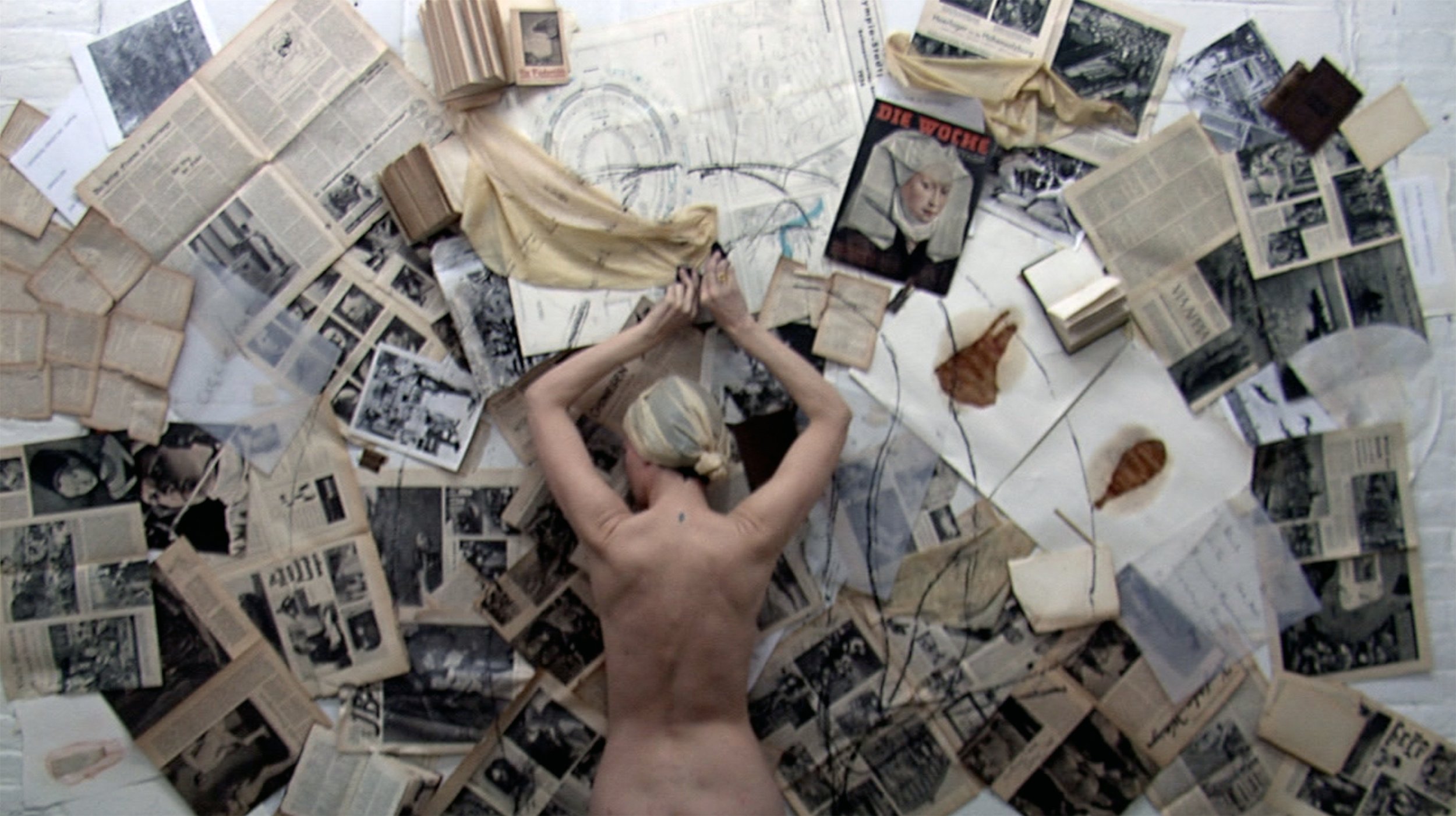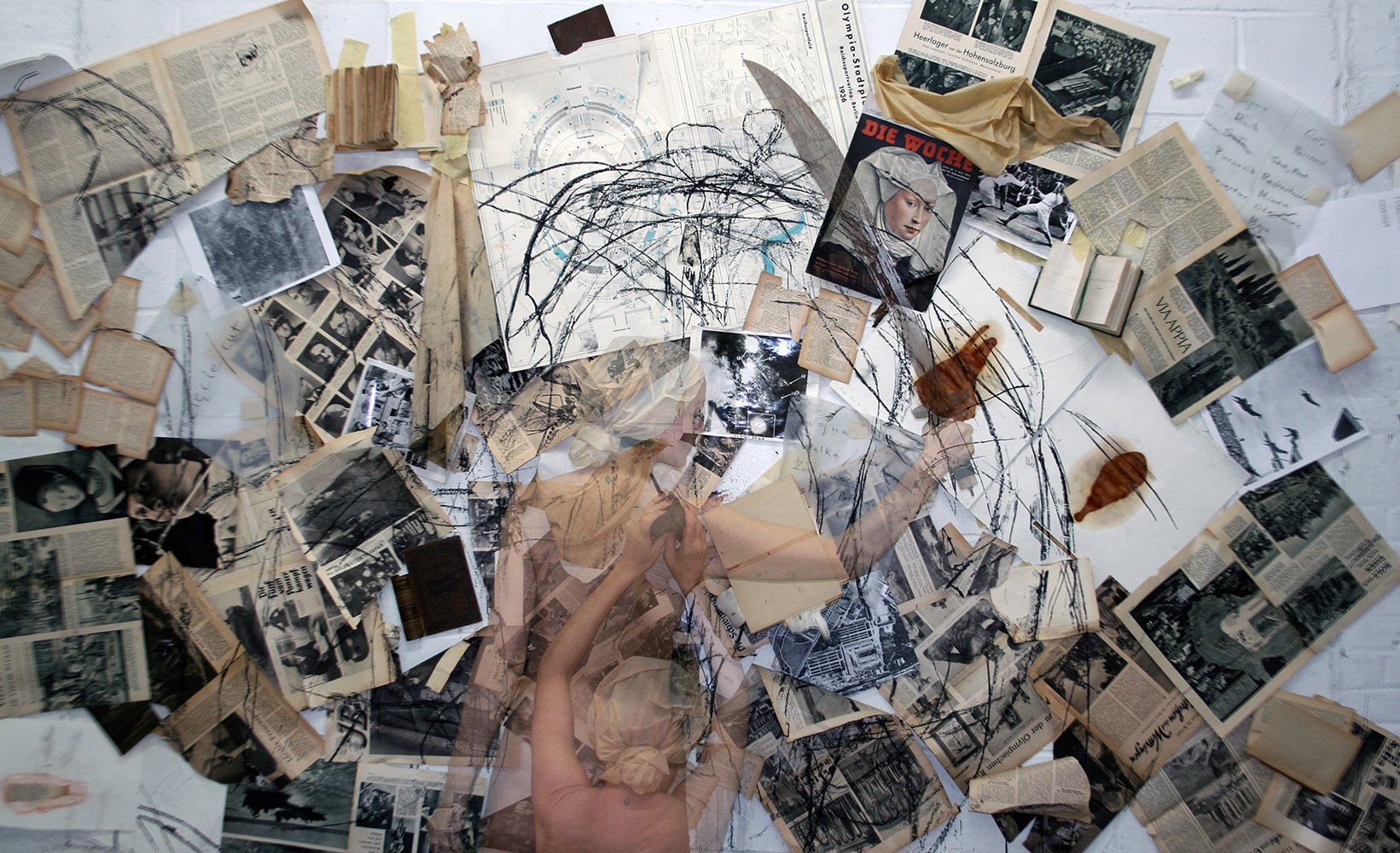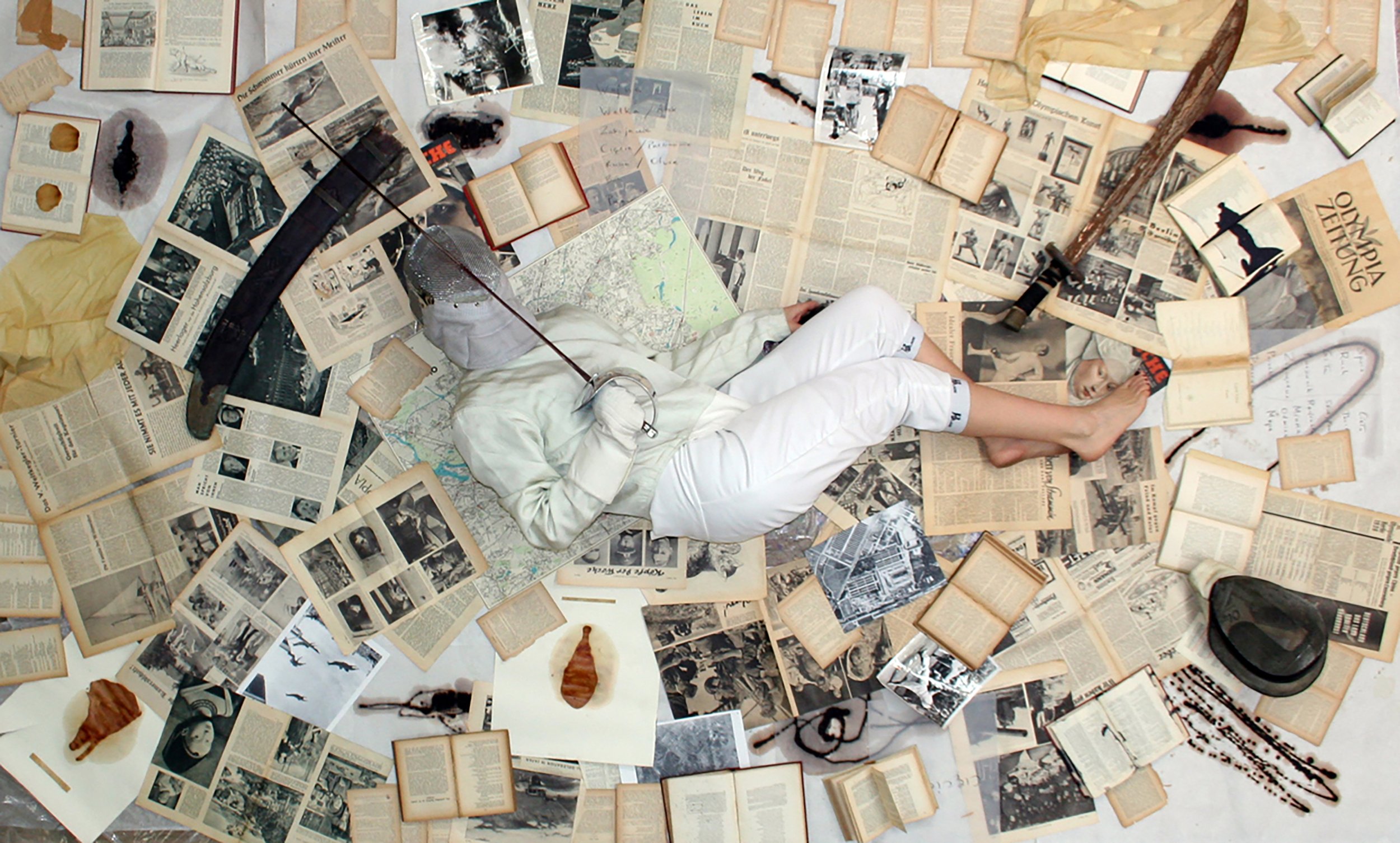Keimai III
Keimai III, 2008. Color photography, dimensions variable, limited edition, 3 + 2 AP
Keimai III
2008
self-shot photography series based on performance for the camera, dimensions variable, limited edition, 3 + 2AP each
single-channel video and sound, limited edition, 3 + 2 AP, duration 8 minutes 6 seconds
Keimai III premiered as a video, sound and photography installation commissioned by Frauenmuseum, Bonn, 2008, as part of Frauen bei Olympia exhibition curated by Gudrun Angelis
CollectionS
Frauenmuseum, Bonn, Germany
White Box, New York
below: photography series based on performance for the camera (selected c-prints)
below: excerpt from video and sound
Credits
composed, written, choreographed, performed, filmed and edited by Monika Weiss
movement performer: Monika Weiss
Artist Statement
Keimai III (2008) is a performance-based video, sound and photography installation inspired by the life of German Olympic fencer Helene Mayer. It incorporates original documents pertaining to the 1936 Olympic Games in Berlin. Helene Mayer was a German Jew who represented Germany in 1936 yet her citizenship was taken away a year earlier due to her Jewish origins. As a person without citizenship, Mayer won bronze medal for Germany.
In the video image we see a figure of a female fencer lying down on top of an archive of documents and drawings. Covered with a fencing mask she is moving slowly, holding a sward. Her body dressed in fencing attire eventually transforms into a nude figure, who is seen standing back to the viewer, facing a wall covered with the same documents, drawings, and maps. She gradually bends towards the right and then, returns back. She then bends towards the left and comes back again, repeating this gesture, her body becoming a slow metronome. Holding a sward, she seems to be gesturing towards the historical archive before her. At some point we see the figure draw over the wall of the archival documents. Holding chunks of charcoal, she stains the archive with drawn marks. We see two versions of her naked body overlapping with each other, becoming sisters, in a slow, ethereal dance. In the last scene she returns as a fencer lying down and seen from above. I have self-filmed both performances for this film as a form of poetic meditation on the violence of history. I created the sound from the layers of recorded voices, inspired by the music of the 11th century composer Hildegard von Bingen.
- Monika Weiss
PRESS Excerpts
Known for her video, sound, and object-based installations such as Phlegethon-Milczenie series (2005–) Weiss is concerned with relationships between history and memory and investigate the act of leaving trace and inscribing as modes of transformation. Constructions of identity through exclusion and searching for new forms of classification are explored in the artist's work as related to the contemporary problematic of democracy,with the example of Nazi period's paradoxical status of being both within and outside the law. One of Weiss' most recent works, Keimai III (2008) was inspired by the life of Helene Mayer and incorporated original documents pertaining to the 1936 Olympic Games in Berlin. Educated originally as a musician the artist continues composing sound for her installations and video works.
- Ika Sienkiewicz-Nowacka, U-jazdowski Residencies, 2009
Her exploration of hiddenness imbues (exhibition) Marginalia with a mystical vein akin to the concept of “aura” articulated by Walter Benjamin […] Weiss abstracts particularity and individuation from her portrayal of human beings, so that anonymousness paradoxically proves their distinguishing characteristic.
- Norman F. Cornett, PhD, Monika Weiss-Marginalia, esse arts + opinions n. 66, Disparition-Disapearance, 2009, edited by Sylvette Babin, p. 71
Exhibitions
Frauen bei Olympia, Frauenmuseum, Bonn, 2008, curated by Gudrun Angelis
Monika Weiss-Marginalia, Galerie Samuel Lallouz, Montréal, 2008, curated by Samuel Lallouz
Publications
Frauen bei Olympia, Frauenmuseum, Bonn, 2008






